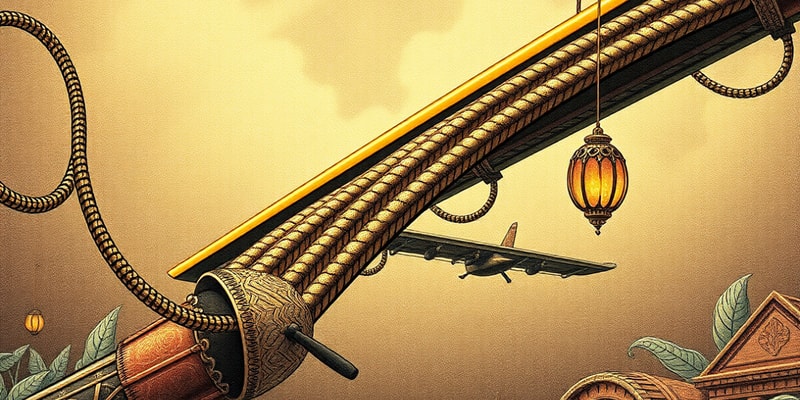Podcast Beta
Questions and Answers
What are the two most common materials used in the construction of aircraft control cables?
Which type of steel cable is classified as Extra-Flexible?
What percentage of cable strength does a Nicopress termination produce?
Where do cables typically wear or break?
Signup and view all the answers
What is the purpose of a fairlead in an aircraft control system?
Signup and view all the answers
What must all control pulleys be equipped with to ensure safety?
Signup and view all the answers
How is tension in the aircraft control cables checked?
Signup and view all the answers
What type of actuators do Bowden cables represent?
Signup and view all the answers
Study Notes
Aircraft Control Cables Materials
- Common materials for aircraft control cables include carbon steel and stainless steel.
Types of Steel Cables
- Non-Flexible options: 1 × 7 or 1 × 19 steel cables, suitable for specific applications.
- Flexible option: 7 × 7 steel cables, providing more adaptability.
- Extra-Flexible option: 7 × 19 steel cables, allowing for greater bending and movement.
Nicopress Termination
- Produces a crimped termination that maintains 100% cable strength.
Cable Inspection Importance
- Cables are critical in aircraft control systems and require scrutiny during scheduled inspections.
- Common failure points for cables are where they pass over pulleys or through fairleads.
Fairleads Usage
- At risk contact points, cables should be run through fairleads made from soft materials like Nylon® or Tufnell® to minimize wear.
Control Pulley Alignment
- Proper alignment is crucial; cables must ride squarely in the center of the pulley groove.
- All pulleys must rotate freely throughout their entire range of travel.
Pulley Protection
- Pulleys should be equipped with guards to prevent cables from jumping out of grooves when slack.
Tension Measurement
- Cable tension is assessed using a cable tensiometer for accuracy.
Bowden Cables
- These cables are designed for pulling actions only, functioning as cable actuators.
Teleflex® Cables
- Engineered for versatility, Teleflex® cables can handle both push and pull actions in control systems.
Studying That Suits You
Use AI to generate personalized quizzes and flashcards to suit your learning preferences.
Description
This quiz covers essential information about materials, types, and inspection protocols for aircraft control cables. Learn about specific cable configurations, the importance of Nicopress terminations, and the role of fairleads in ensuring cable longevity and safety. Key insights into proper alignment and maintenance techniques will also be discussed.





